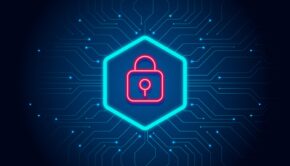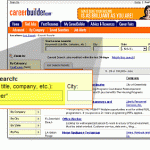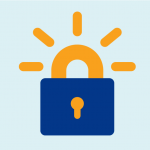Threats To Internet Security: Types And Protection Methods
In every 39 secs, a cyber wall gets breached. Retail, technology, and Government are the most vulnerable industries to these threats. It won’t be wrong to say that data has become as lethal as any other demolition out there.
And sadly, it seems to be getting worse. From worldly-known sites like Linkedin to famous exercise-and-diet tracker MyFItnessPal and dozens more, informed data breaches state headlines more than ever before. It’s time to take that old infantile caution “Stranger danger!” seriously, especially now that most of our daily activities and procedures are available and automized for use on the internet.
Cybersecurity professionals progressively defend computer systems against various types of cyber threats. These attacks hit private networks and businesses every day, and the amount of variety of threats has increased rapidly. Several security measures are taken by these professionals to safeguard the data of the company and one such measure is applying DNS filters, it helps block malicious content and also helps improve network visibility.
The motives for internet threats are many, but the most prominent is money. Cybercriminals may take a system offline and demand immediate payment to restore its operation – ransomware!
Here, we’ve covered the background of web exploiting and the most extensive system hacks the world has experienced; however, today, we’re heading back to the basics – explaining and exploring the types of internet threats and how to avoid them.
1. MALWARE
A petite term for “malicious software” comes in various forms and can cause severe damage to a corporate network or a computer. There are numerous forms of malicious software, from worms and viruses to Trojans and more. Malware is often considered a catch-all threat that refers to any software created to cause damage to a network, server, or computer.
SOLUTION: Antivirus software is the most prevalent solution to protect your devices and networks against malware. It is an excellent start to prevent potential system threats. For enterprises, safeguarding your endpoint is critical to contain, correct quickly, and detect advanced threats to your network.
2. MAN IN THE MIDDLE
MITM or a man-in-the-middle attack occurs when cybercriminals insert themselves into a different transaction. After distorting the traffic, they can steal and filter data based on Cisco. These attacks typically occur when a visitor enables an unsecured public network. Therefore, attackers insert themselves between the network and the visitor and then use the malware to use data for fraudulent purposes also use a high-speed internet connection to complete this as soon as possible.
SOLUTION: Having a stringent encryption mechanism on wireless access sockets averts unwanted users from entering your network just by being nearby. Furthermore, tracking increasing and evolving cyber attacks is critical to achieving an infallible cyber wall. As cybersecurity workers continue to increase their knowledge of breaches and prevention, having masters in cyber security online can be advantageous. The only way to contribute to the field is to come well equipped with the knowledge and experience gained together.
3. TROJANS
If there’s a Trojan on your network/system, consider it to be completely unprotected, giving the hackers a free pass to steal any piece of information. Trojans typically present themselves as inoffensive computer programs so that users may agree to let them in. Meanwhile, hackers get a chance to disrupt your system.
SOLUTION: Never install or download software from a source you don’t recognize. Keep all software on your system up to date with the newest patches of security. And make sure to run a Trojan antivirus regularly.
4. PHISHING
A menace developed by hackers attempting to solicit sensitive or private information, phishing strategies tend to be the initial point of almost all successful cyber threats. Phishing schemes have many forms, whether it’s a standard web service or your bank, with the sole purpose to force you in by asking you to verify personal information, such as passwords and account details.
Many users relate phishing threats with emails, but this threat can damage more than just your inbox. These days, hackers employ phone calls, social media quizzes, phony apps, and text messages to trick an innocent victim.
SOLUTION: An ideal way to protect your network against phishing is to deploy a spam filter that detects blank senders and viruses. Keep all systems rationalized with the latest security patches. Also, encrypt all delicate company information and use a web sift to block malicious websites.
5. BOTNET
It’s a network of companies that have been compromised or hijacked, giving cybercriminals the ability to take over infected mobile devices or computers remotely. When the malware enters your mobile device or computer, it recruits your damaged device into a botnet. The hacker now has the power to control your device and alter your data in the background without you knowing.
A botnet typically consists of a few or hundreds of computers, and when bots join forces, they become unstoppable. And so, if a botnet crashes your system or website, it can create millions of requests simultaneously and ultimately overload the servers or shut the website down. As many businesses are aware, an offline website can be costly, ensuing a damaged reputation.
SOLUTION: A Virtual Private Network, VPN, allows access to personal data via public networks. The VPN service provider you use must feature a kill switch that stops unwanted access to classified information. If not VPN, then firms must have firewall protection. It’s a necessary defensive tool that shields against network-based threats.
6. EMOTET
Emotet is an advanced, segmental banking Trojan that acts as a dropper or downloader of numerous other banking Trojans. Emotet is a system-wrecking threat that continues to be among the most destructive and costly malware.
SOLUTION: Keep yourself informed about all the new developments regarding Emotet. You must install updates as quickly as possible to eliminate security gaps. Also, install a malware and virus protection program and have it scan your system for vulnerabilities.
FINAL WORDS
It can seem like a challenging task to keep track of all the latest network security threats out there. Whether social media is creating fear of being online and sharing our information for all to see, or the threats waiting for us in the dark are grave. The best thing one can do is be prepared.
There is no 100% way to remain threat-free. Still, with a few prevention techniques (as mentioned above), we can keep our systems/networks as secure as possible.






![Footballers and their cars [Infographic]](https://technofaq.org/wp-content/uploads/2017/01/footballers_and_their_cars-150x150.jpg)








